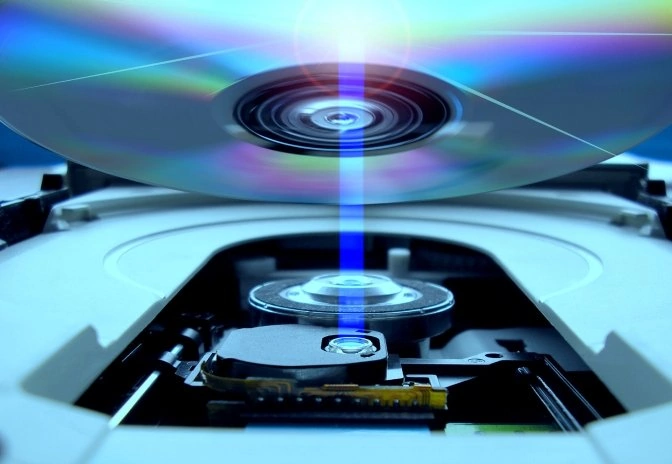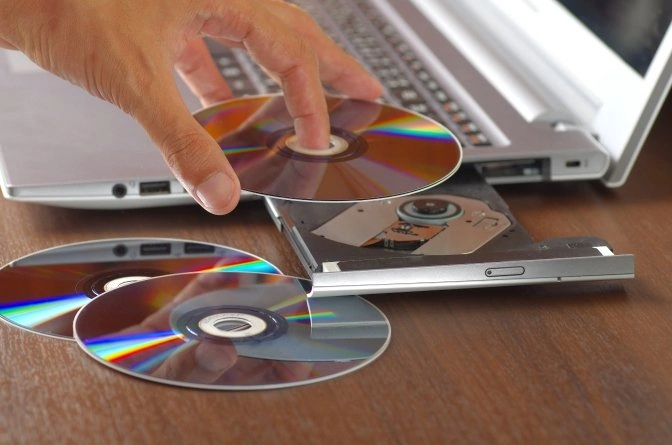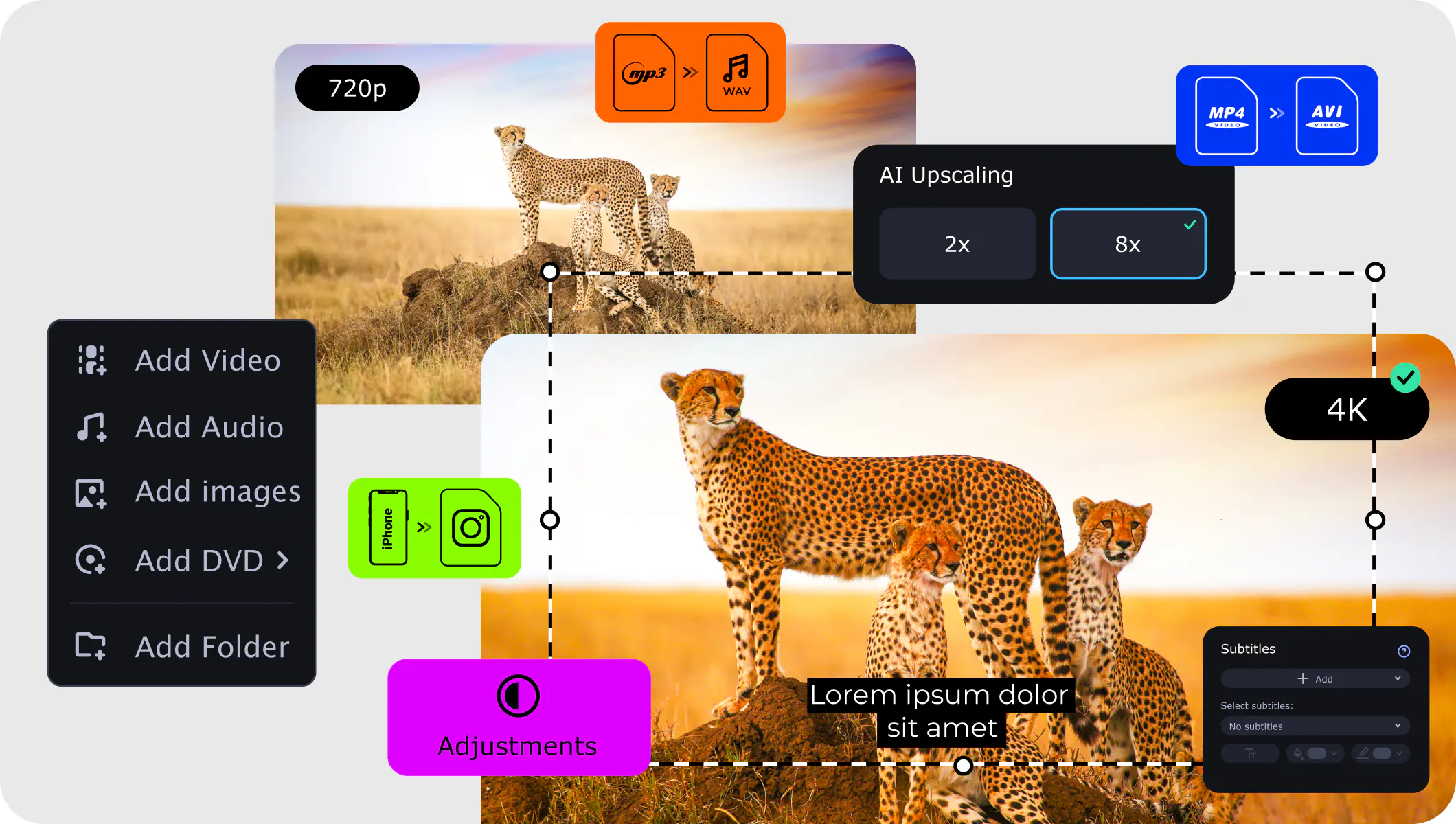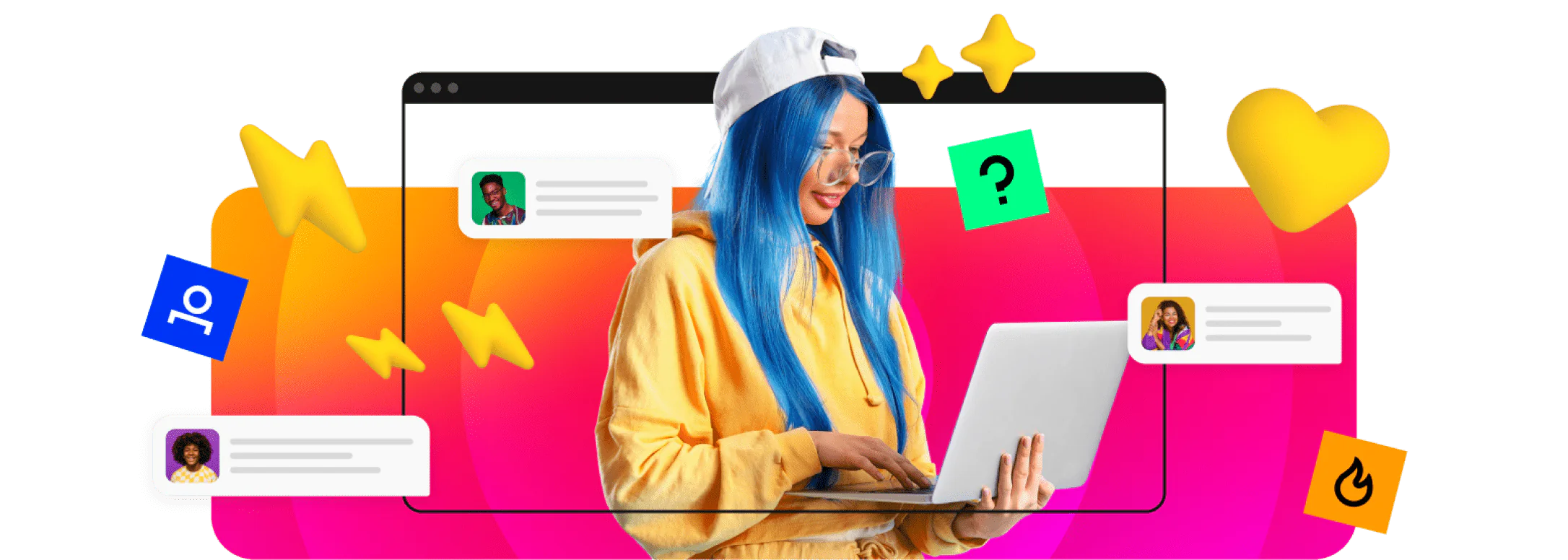Movavi Video Converter
The ideal way to get your media in the format you need!
Blu-ray vs. DVD: Understanding the Differences
When you're watching a TV show or movie, there are two main disc media formats for you to consider: Blu-ray and DVD. They're not going to play on all devices based on the device you have or the software that is installed. Further, there can be considerable differences between resolution and overall quality.
You may have a movie in one over another. While you may prefer it in one format, you may be stuck with a TV or movie in a different format. This is why it's important to know how to choose between the two disc-media formats. Furthermore, you need to know about programs that can provide a media file conversion.
For example, Movavi Video Converter – a simple and effective tool for switching between video, audio, and image formats.
There are quite a few differences between Blu-ray vs. DVD, with the Blu-ray being the newer technology. When you're looking to buy a movie, a TV-show boxed set, or something else, you're often given the option of choosing.
Blu-ray came out to guarantee a better picture than standard DVDs. However, when you play both discs on a good Blu-ray player, the quality isn't that different between the two. However, if you try to take a standard video file and burn it to a DVD and, then, play it, you can see differences. Much of this has to do with originating file types.
Blu-ray players are backward compatible, allowing you to play both Blu-ray and DVD discs on them. Further, you'll find more options when it comes to Blu-Ray players as more technology stores will stock them over DVD players. The cost of a player isn't as significant as when they came out years ago.
Quality: Which is better?
The Blu-Ray has an HD picture commonly referred to as 1080p. This means that there are 1080 horizontal lines that make up the picture in comparison to the traditional 576 lines that are used on a standard-definition DVD. The added resolution allows the images to look sharper and more realistic. A Blu-ray version of a film will be higher quality, sometimes as much as four times better than the DVD version of the same film.
There is something to be aware of when you buy a Blu-ray of an older movie — there may be some issues with how the video was burned to the disc. It may not have been optimized for Blu-ray since it was never intended to go onto such technology. However, newer films that were launched since 2006 when the technology came out won't provide those same issues.

Making the comparison
There's going to be a few other things to look at within your comparison in a DVD vs. Blu-ray than just the quality.
Storage capacity is measured in gigabytes, similar to computers and storage drives. A DVD will only be able to store about 4.7 GB of data, which equals about two hours of a movie. A Blu-ray can hold about 25 GB of data, which allows for more high-definition information. It can hold about 13 hours of standard definition information or about two hours of high-definition information. Some of the double-layer discs out there can hold substantially more. This means that, even with a DVD labeled as HD, it's not going to be able to hold the same level of data as a Blu-ray disc simply because of the technology.
The laser technology used to read the two formats varies differently, too. When it comes to the difference between DVD and Blu-ray, A DVD player will use a red laser at 650nm wavelength. A Blu-ray, however, uses a blue laser and reads at a smaller diameter. What this means is that there's a more precise reading of what's on the disc to ensure that there are no skips. It also allows the images to come across more clearly.
In regards to audio, what is the difference between DVD and Blu-ray? DVD formats support a total of three audio formats: Dolby Digital, Linear PCM, and DTS Digital Surround. The Blu-ray hit the scene with the promise of better audio quality. It supported additional formats including Dolby TrueHD, Dolby Digital Plus, and DTS-HD. This has allowed people with home theaters to consistently choose the Blu-ray format more prominently over the DVD because of wanting an exceptional sound to what they were watching in addition to a higher quality of the video.
Why converting between media files is necessary
When you choose DVD or Blu-ray, the Blu-ray is the better format in terms of audio and video, it's easy to see why it's more desirable than a DVD. While a DVD may be promoted as being HD, it's not going to offer the same audio and visual appeal as a Blu-ray, especially if it's on a single-layer disc.
When you have a media format, whether it is from your own video camera, something you downloaded, or something that was shared with you, it's important to know how to convert it into a media file that works best for you. If it is currently in a file that doesn't work, there's no need to get upset. Often, you can convert the file into something that works better — and from there, you can choose to burn it onto a Blu-ray, allowing you to play it in your Blu-ray player, too.
You may have a variety of different media formats. There are over 100 out there, making it difficult to always play what someone sends you. From AVI to MOV to MP4 and everything in between, there's no need to fret. Instead, it's all about knowing how to convert your media file so that you can get it into a file that provides you with the best audio and visual components. That's what Movavi is for.

How to convert media files
If you have a video that isn't in the format that you prefer, you can transfer the video format into a format that works better. This includes being able to burn a video creation onto a Blu-ray or DVD disc that is properly formatted.
All of this can be done on your computer with the right software. You choose the video file you want to convert. From there, you decide what format you want it to be in. Then, the software handles the conversion, processing it into the desired file type.
You can download Movavi Video Converter in order to transfer to any device or platform. Further, the lightning-fast conversion allows you to convert clips from the web as well as all of your favorite films. You can edit and crop your clips, fix the quality, and more with this software program, too.
Download Movavi Video Converter for free today to test it out. Once you see how easy it is to use, you can buy the full version and see why it has become the bestselling program. In no time at all, you can get your files converted into the files you want to work with.
Movavi Video Converter
The ideal way to get your media in the format you need!

See other useful how-to guides

Have questions?
Join for how-to guides, speсial offers, and app tips!
1.5М+ users already subscribed to our newsletter